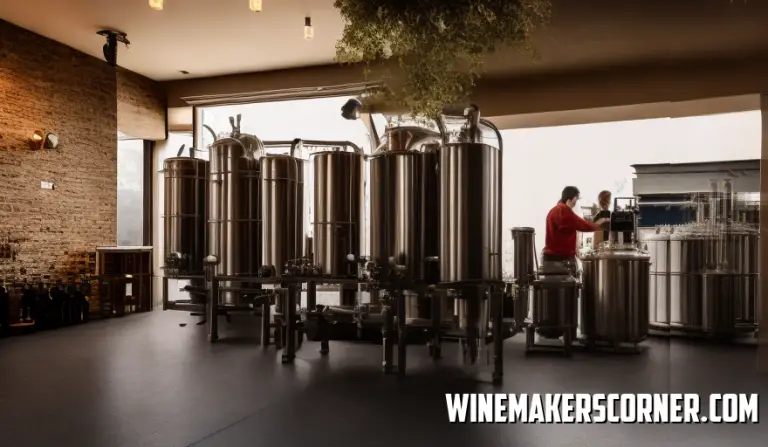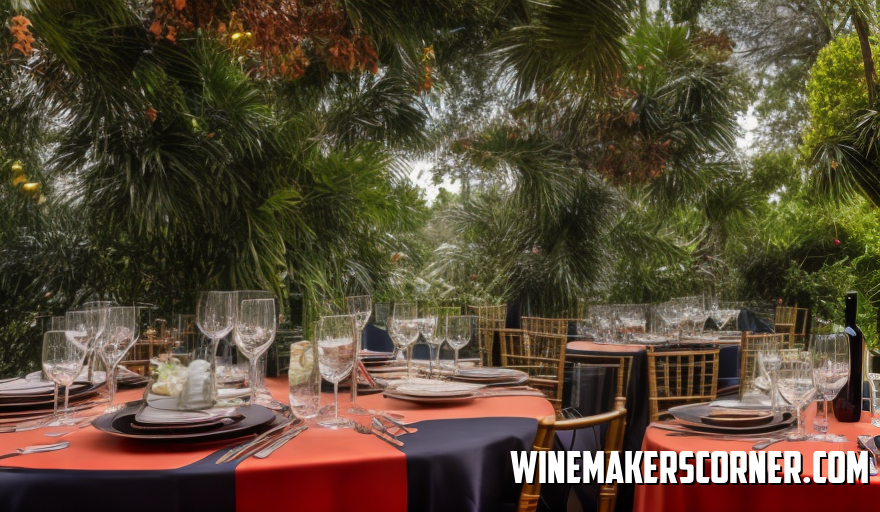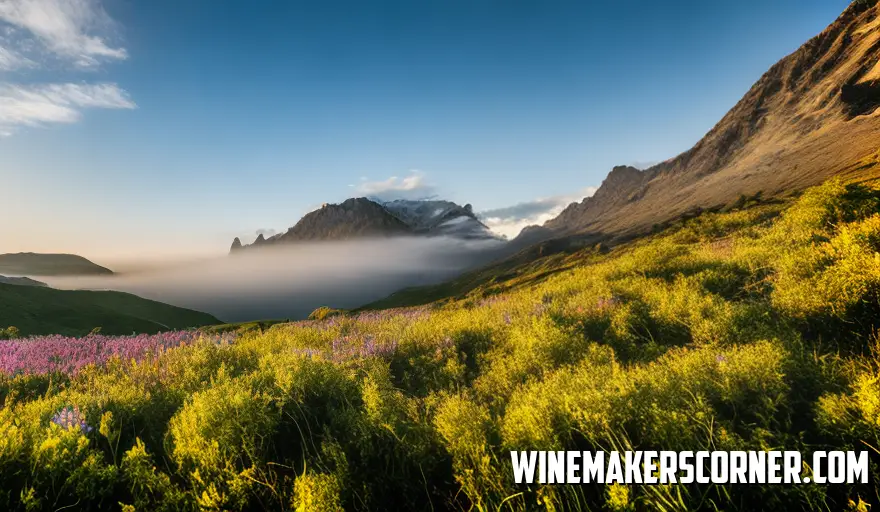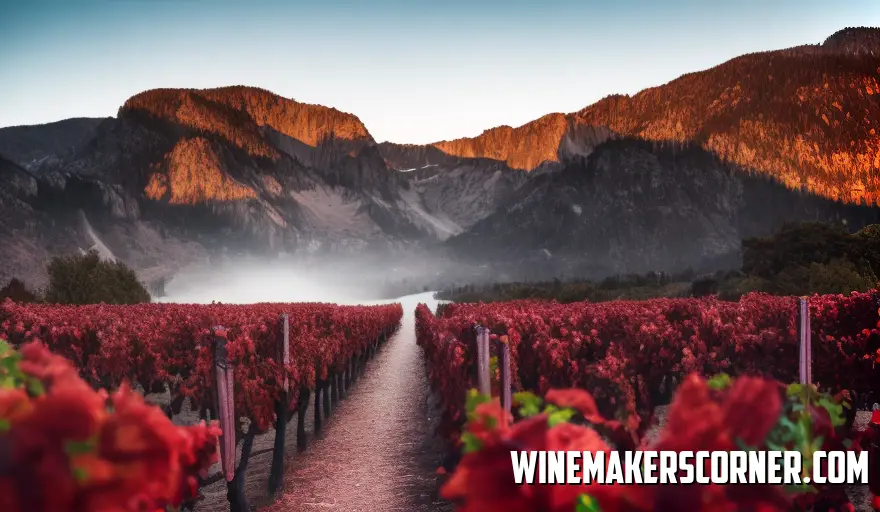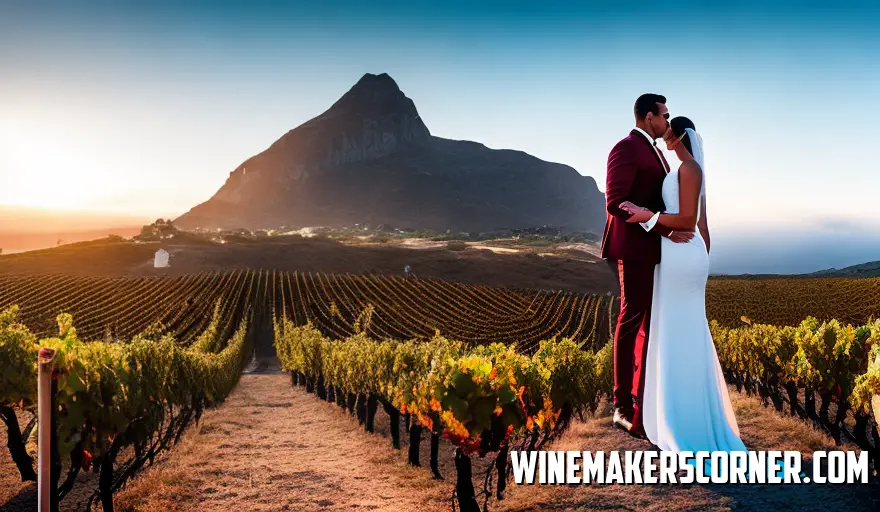Raise your glass of white wine high – its time to celebrate! This beloved drink has graced tables for countless years with its velvety texture and rich flavors. But have you ever wondered about all that goes into crafting such an amazing beverage?
Join us on an eye opening quest as we delve deep into vineyards and cellars tracing each meticulous step involved in making white wine shine like liquid gold. From handpicking only top notch grape varieties to examining how soil composition impacts taste we’ll unveil every secret behind this enchanting libations allure.
Table of Contents
Understanding the Grapes: Selecting the Perfect Varieties
Selecting the right grape variety is an essential first step in making white wine. Different types of grapes can have a significant influence on the finished products taste profile, scent, and aging potential. Thankfully there are many white grape varietals that winemakers can utilize worldwide.
Chardonnay stands out due to its versatility; it produces wines spanning from crisp citrus flavors to rich buttery ones depending on how its grown or oaked treated in the cooperage process. Sauvignon Blanc provides acidic zinginess with herbaceous overtones while Riesling imparts fragrant floral aromas alongside bright fruit notes perfect for sweet toothed drinkers! Gewürztraminer has an exotic mouthfeel featuring tropical fruits combined with spicy accents which makes it an intriguing option despite being somewhat challenging to pronounce. And if you prefer your wine less full bodied? Then you’ll appreciate Pinot Grigio or Pinot Gris which offers a refreshing taste of citrus with subtle mineral nuances.
To produce outstanding white wine, terroir plays a significant role in determining each variety’s taste profile. Climate, soil composition, and topography are some of the key factors impacting grape growth from bud break through harvest season.
Cooler regions such as mountainous areas tend to offer wines with higher levels of acidity and subdued fruit flavors compared with warmer growing regions like valleys where riper fruits thrive for opulent tastes in wine production.
Balancing grape selection, blending elements and other processes required in winemaking is what determines a quality final product. Blending requires knowing how best to balance each component’s strengths while minimizing weaknesses- this leads to an exceptional bottle that exceeds every expectation.
It is imperative for winemakers who desire memorable bottles exceeding clients’ demands always have expert knowledge about grape varieties alongside topographical considerations like terroir when crafting excellent white wines.
Terroir Matters: The Influence of Soil and Climate on White Wine
White wine production hinges on terroir – a French term encompassing the soil, topography, and climate that influence grape growth and ultimately shape a wine’s unique characteristics. Soil type particularly impacts overall taste; limestone adds minerality while clay contributes body and richness to white wines. Sandy soils result in aromatic yet delicate whites meanwhile volcanic soils generate zesty ones with lively acidity. Climate is equally important – cool regions provide crisp high-acid options such as Chardonnay from Chablis or Riesling from Germany’s Mosel Valley whereas warmer locations lean towards fuller-bodied selections featuring ripe fruit flavors like Viognier from California or Vermentino produced on Italy’s sun-kissed coastlines.
Microclimates play a crucial role too as even within the same region, vineyards at higher altitudes may experience cooler temperatures leading to nuanced differences in flavor profiles. Proper environmental conditions are fundamental when making quality white wine. Sunlight is one such essential element; grapevines require ample sunlight for photosynthesis that will lead to optimal ripening with an ideal structure balance keeping its acidity intact.However, too much sun can cause overripe grapes resulting in weak wines lacking complexity.The amount of rainfall also heavily influences the final product: excessive rain induces disease or dilutes taste profiles while droughts force vines into directing their energy towards fewer clusters, leading to more intense flavors at harvest time.Winegrowers must be acutely attuned not only to their unique terroir but also adapt by setting pruning techniques optimized for maximum sun exposure,making watering decisions depending on local precipitation patterns,and selecting grape varieties that thrive best under specific soil compositions climatic conditions.Through this process each bottle of white wine obtains a distinct sense of place which cannot be reproduced elsewhere.
Harvest Time: Picking Grapes at Their Peak
For connoisseurs of exceptional white wine the journey starts at harvest time. Timing is everything when it comes to picking grapes at their peak ripeness – with just the right balance of sweetness and acidity that will make all the difference come bottling time. A delicate dance between natures whimsy and an experienced viticulturists intuition is what makes it all possible.
Even though most regions harvest between August and October many factors such as weather patterns, grape variety grown as well vineyard location play significant roles in determining that precise moment. Every vineyard presents unique challenges because no two plots of land are alike; thus what works well for one may not necessarily work for another. Monitoring grape maturity becomes an essential task during this period since a lot depends on winemakers’ ability to assess various factors such as sugar levels, acidity, pH balance or overall flavor profile.
Dedicated tools like refractometers come into play here – measuring sugar content in a grapes must (juice) while taste tests reveal tannin ripeness & flavor development – aiding winemakers immensely in creating a perfect blend with just the right notes. Finally its time- hand harvesting remaining popular among many wineries due to its gentle touch on fragile grape clusters – crucial for high quality white wines. Cool mornings are ideal for workers who carefully snip grape clusters off vines with shears so that they stay fresh longer without much risk of oxidation later on.
Speed is key during harvest season as grapes must be quickly transported from vineyards to wineries where they’re chilled upon arrival – an important stage that sets the foundation for creating fine white wines. In conclusion harvesting ripe grapes at just the right moment is crucial in shaping outstanding white wines that require careful consideration and appreciation of each vineyards unique character traits; it may be labor intensive but ultimately very gratifying because it enriches the delightful world of wine production.
Crush and Press: Extracting the Juice from Grapes
Extracting juice from grapes is a crucial aspect of making white wine. This complex process involves two intertwined steps: crushing and pressing that form the foundation for an explosion of flavors.
But how do we go about transforming plump grapes into delectable wine? We shall take you on an intriguing journey through these fascinating steps! Sorting and destemming are meticulously done upon arrival at the winery to guarantee only high-quality fruit gets fed into the crusher.
Here’s where things get exciting – as gentle pressure is applied, grape skins rupture thereby releasing juices that brim with potential greatness.
Next comes pressing- an entirely different technique used in making white wines since red wines ferment along with their skins on- thus demanding unique treatment…
Winemakers must separate grape juice swiftly from its skin and seeds lest they risk introducing unwanted bitterness or color transfer during fermentation. The task demands ingeniousness in employing various presses that have distinct methods for extracting juice while keeping flavor and aroma profiles intact! Not all pressing techniques are created equal.
Some winemakers prefer whole cluster pressing, which involves pressing whole grape clusters with minimal crushing. This method produces exquisite juice without risking harsh tannins in the white wine. Others opt for free-run juice collection, which is a delicate dance between crushing and pressing that allows gravity to coax out precious liquid gold before actual pressing occurs. Mastering crush and press techniques is no easy feat, but it lays a strong foundation for enchanting white wines that delight our senses sip after sip.
Skilled hands can tease out exceptional flavors from nature’s bounty to craft exceptional white wine.
Fermentation: Transforming Sugar into Alcohol
The artful dance between yeast and sugar in winemaking culminates in fermentation – a stunning transformation resulting in white wine. This intricate process plays a pivotal role in winemaking, deserving of our closest scrutiny. As grapes bask under sunny vineyards awaiting harvest time, their quality becomes crucial to securing only the finest fruit; one wrong move can jeopardize everything! Within each grape hides its nectar of life: sugar – which is precisely what lures yeasts – tiny single-celled organisms that revel at the prospect of feasting on it! They do so with vigor while causing something magical to happen inside every grape: alcohol production! But there’s more to it than just alcohol: byproducts such as carbon dioxide bubble away leaving behind an exquisite liquid imbued with intoxicating properties and flavors interwoven into its character via unique esters produced throughout fermentation.
The world of white wines is full of surprises thanks to the captivating process of fermentation. Whether you’re picking up on citrusy hints or tropical undertones each combination is unlike any other due to its unique journey through fermentation. Temperature plays a key role in bringing out these diverse flavor profiles – with cooler conditions giving way to subtle notes while warmer temperatures coax out bolder expressions from our precious fermenting concoction.
The artful hand of a skilled winemaker ensures that this delicate balancing act is always managed properly for optimal results. And once yeasts have had their fill and sugars run dry fermentation draws to a close – ushering in an era of aging and maturation that we’ll explore at another time. But what remains undeniable is how yeast and sugar combine harmoniously to create an endless variety of beautiful white wines that are worth every sip!
Malolactic Fermentation: Softening the Acidity
In white winemaking Malolactic fermentation is an essential process often abbreviated as “MLF.” It plays a crucial role in softening natural acidity levels and elevating complexity during production. While this technique is fairly well known when making red wines its utilization in crafting white wines remains somewhat less familiar. Essentially during MLF lactic acid bacteria are used to transform tart malic acid into smoother lactic acid–reducing sourness while imparting creaminess in mouthfeel for a more refined taste profile.
White wines exhibiting high acidity levels such as Chardonnay or Sauvignon Blanc particularly benefit from this technique; however implementation methods vary depending on certain factors such as introducing bacteria intentionally versus utilizing naturally occurring strains under warmer conditions conducive toward bacterial growth and activity. Selecting whether or not to introduce MLF into white wine production depends on a variety of considerations including specific wine style with lighter whites less likely to benefit from the secondary fermentation process while full bodied varieties tend to prosper from softened acidity. Its important to keep in mind that regional preferences play an influential role in determining which types of wines are made.
Turning our attention specifically towards white wines undergoing malolactic fermentation (MLF) we must consider the possible risks involved with this process. One issue has to do with overly softened acidity which can yield a flabby texture lacking freshness; another concern stems from unregulated bacterial growth during this second stage of fermentation which could produce disagreeable flavors. However it should also be noted that when practiced prudently MLF represents an alluring way for winemakers to leverage acidity manipulation in order to enhance taste profiles and achieve greater depth and complexity.
Aging Techniques: Oak Barrels vs. Stainless Steel Tanks
White wine production can yield many possibilities, and one of its fundamental components is deciding how it will be aged. Of all these choices, top-tier producers often opt for either oak barrels or stainless steel tanks as aging techniques for white wines. Oak barrels have been around for centuries as an age-old tradition that imparts distinctive flavors such as vanilla, toast, and buttery notes extracted from natural compounds within the wood itself. Oxygen exchange occurs which allows softening of acid content over time due to oak’s porous nature.
On the other hand, modern winemakers utilize stainless steel tanks because it preserves fruit purity & freshness while maintaining crisp acidity levels without adding any new flavors from its vessel component — offering more precise control during production than ever before! Both techniques bring benefits: oak adds depth & complexity whereas stainless steel ensures liveliness & vibrancy unto each bottle produced; thus decisions must be made based on style preferences in tandem with desired varietal outcome. Modern winemakers are adopting a mixed strategy when creating their white wines. By fermenting in stainless steel and then aging in oak – or vice versa – producers hope to achieve flavor combinations that offer both pure fruit taste and nuanced hints of oak.
Deciding whether to use steel tanks or wooden barrels depends on ones goals for each particular varietal and blend. So when you enjoy your next glass of Chardonnay or Sauvignon Blanc take note how these age old techniques have helped create its unique notes – revealing one more element in making fine white wine.
Fining and Filtration: Clarifying White Wine
In creating exceptional white wines with exquisite taste profiles, two vital components come into play -fining and filtration. These processes serve to clarify the wine, refine its flavor notes, and enhance its overall appearance. Interested in learning more about these techniques?
Read on! Fining is the process of adding specific agents that bind with unwanted particles and precipitates thus forming amalgamations that settle at the bottom of your wine container resulting in a clear liquid free from faults. This procedure not only stabilizes the wine but also improves visual appeal – an essential aspect of any excellent white wine.
While selecting a fining agent, several considerations come into play such as grape variety utilized or even winemaking techniques employed when making the drink. Various fining agents exist, each with unique properties- casein targets phenolic compounds that lead to bitterness or browning while bentonite clay eliminates proteins that cause cloudiness in whites when chilled.
Achieving crystal clear clarity in white wines requires more than just fining – filtration is also an essential step. This involves physically separating any remaining solids from the liquid using barriers like screens or membranes with varying pore sizes. There are different types of filtration techniques for removing larger particles, finer sediments and eliminating unwanted microbes that could impact quality. However finding the right balance during this stage is crucial as over filtration could strip away desirable flavors while under filtration might leave behind impurities.
Ultimately crafting outstanding white wines demands both fining and filtration – two intricate procedures that require skillful execution.
Bottling and Corking: Sealing in Flavor
One important yet unnoticed step in white wine production is bottling and corking, which play a crucial role in preserving delicate flavors of these exquisite beverages. Lets delve deeper into this fascinating process. To make sure they make no mistakes while making their decision on whether or not to bottle their wines winemakers must consider several factors: maturity, stability and potential for improvement.
Bottling commences when they are confident with their choices and after careful planning.
Wineries must ensure that all equipment used during bottling is impeccably clean through sterilization procedures that prevent contamination and safeguard flavor quality by paying close attention to detail.
Regardless of method; whether manual or machine assisted filling bottles precisely ensures no overfilling occurs that causes spillage while underfilling opens up oxidation risks leading taste deterioration affecting flavors adversely.
Cork: The Wine Protector
Winemakers have long trusted in cork as their preferred choice for sealing bottles due to its unique properties. Derived from oak trees, it offers ideal flexibility and impermeability – crucial for preserving subtle flavor distinctions in white wines.
Synthetic corks are now available as well – claiming advantages such as affordability and consistency.
Still, traditionalists insist that nothing beats natural corks’ ability to maintain intricate flavor nuances over time.
If maximum protection is required though, screw caps offer a viable solution- free from any risks associated with cork taints and ensuring peak taste preservation instead.
After being sealed with either a cork or screw cap, each bottle receives individual attention when labeled- showcasing its personality while providing critical information on content composition at the same time.
While bottling and corking may not seem like glamorous winemaking processes at first glance; they are vital steps towards ensuring high-quality wine. The intricate process guarantees that every white wine sip accurately represents the winemaker’s skill – a perfect balance of flavor and heritage.
